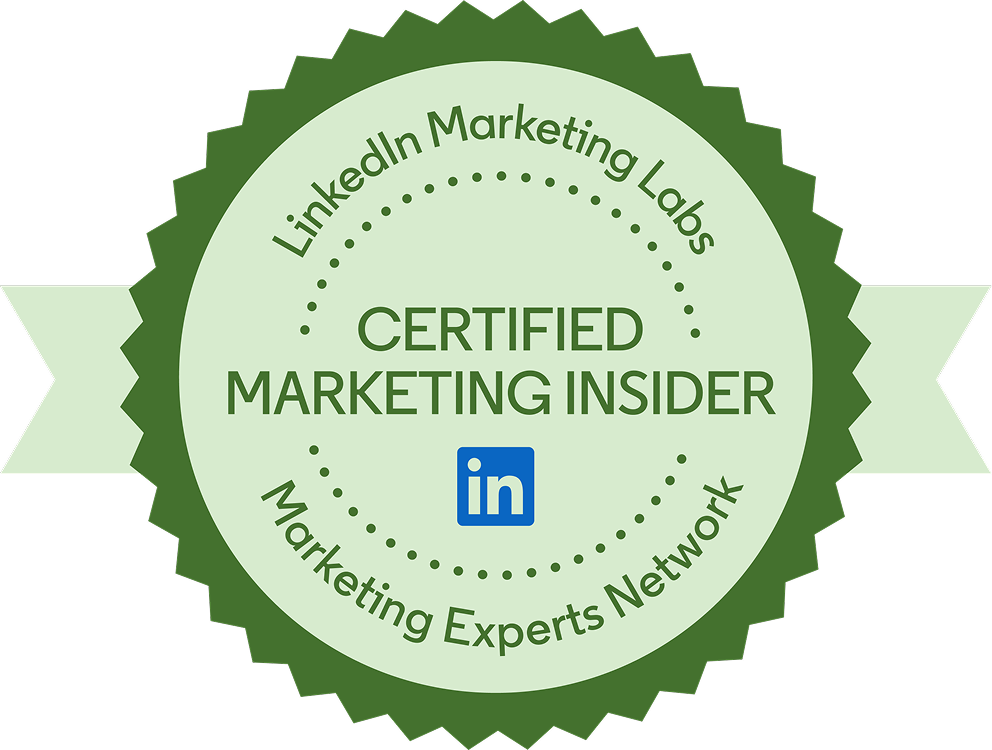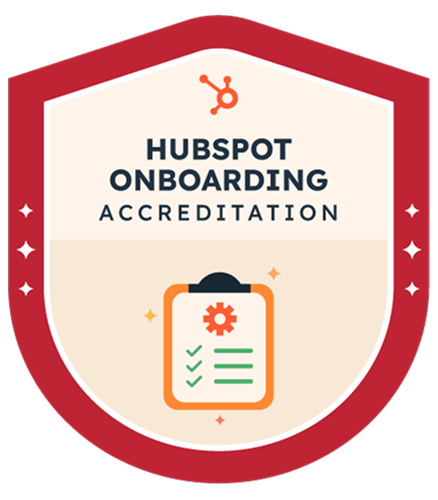You are probably familiar with this situation. Your sales team is busy chasing leads, you have plenty of new contacts in your CRM - there is just one problem. New leads aren’t turning into customers quickly enough.
If you’re struggling with a low conversion rate, the problem isn’t the lack of leads - it’s knowing which ones are worth pursuing. When creating an inbound marketing strategy, your focus is on getting as many leads into the funnel as possible. The thing is, only a small percentage of leads will eventually become customers. While the conversion rate varies across industries, overall, statistics show that as much as 97% of your marketing leads are not yet ready to buy.
Let that sink in. That’s more than three quarters of your inbound marketing efforts - a lot of missed opportunities.
Luckily, there is a way around this. What if I told you you could use a proven approach to evaluate your prospects and determine how ready they are to buy from you? This way, you can optimize your marketing and sales to concentrate on the leads that actually fit your ideal customer instead of wasting time and resources on chasing cold leads that will not convert.
Sounds intriguing? Enter lead scoring.
Lead scoring: the basics
Lead scoring is a methodology that allows you to segment your marketing leads based on their readiness to buy from you, whatever it is you are selling. By assigning scores to your leads based on a predefined set of demographic, firmographic, and behavioural criteria, you are able to gauge which leads rise to the top and should get passed to sales first.
That makes lead scoring first and foremost a marketing tool, allowing you to tailor your nurturing strategy to where the marketing lead is in their buying journey.
At the same time, as the set of criteria based on which you score are defined by both the marketing and sales team, it makes sure both departments are always aligned. This saves you time and increases your opportunity to close deals.
While there are many different lead scoring models, at SUM Digital, we use one consisting of explicit, implicit, and negative scoring. Let’s break it down.
Explicit scoring
Explicit scoring involves evaluating leads based on the information they provide directly. These are:
- Firmographics/ICP: company-focused data points (size, revenue, industry, location, products/services, etc.)
- Demographics/Buyer Persona: person-focused data points (age, gender, job title, seniority, etc.)
When it comes to explicit scoring, you can assign the highest scores to information that matters most to you - be it company size, revenue, industry, location, or even language. Before diving into lead scoring, though, it’s important to first answer these key questions: Are you interested in selling to B2B or B2C? What is your target audience? What does your ICP look like?
To optimize your explicit scoring, it is also recommended to create a detailed buyer persona. What are the demographics most important to you - age, interests, or the country of origin? Who are you aiming to target - the CEO, hiring director, or marketing manager? Based on this information, you can add points to your leads to sift through prospects more effectively.
Example:
Let’s say you’re targeting B2B companies in the software industry. Here’s how explicit scoring might look like for you:
Firmographic Data:
- Company Size: A company with 500+ employees gets 10 points.
- Revenue: A company with annual revenue over €50 million gets 8 points.
- Industry: A software company gets 12 points.
- Location: A company based in the Netherlands gets 6 points (since you’re focusing on EU-based leads).
ICP (company-focused data):
- Product-Market Fit: If the company uses a product that aligns closely with your service, they get 12 points.
Persona (person-focused data):
- Target Role: If the lead is a CEO, they get 15 points. A marketing manager gets 10 points, and a junior marketer gets 5 points.
Example Lead:
- Company Size: 700 employees (10 points)
- Revenue: €60 million (8 points)
- Industry: Software (12 points)
- Location: Netherlands (6 points)
- Target Role: CEO (15 points)
- Product-Market Fit: Excellent (12 points)
Total Explicit Score: 63 points
Implicit scoring
How do you know if a lead is interested or not? A key indicator is an action they undertake in response to your marketing. While explicit scoring uses known data, implicit scoring is based on behavioral engagement. Did a lead visit your landing page once or several times during a certain time period? Did they fill out a form or download a playbook? You can assign scores for these actions, both positive and negative - with the highest scores assigned to actions most important to you.
Example:
- Landing Page Visits: Visited the landing page once (5 points)
- Form Submission: Filled out a contact form (15 points)
- Content Downloads: Downloaded 1 playbook (12 points)
- Email Click-Through: Clicked on a single link in an email (8 points)
Total Implicit Score: 40 points
Negative scoring
As the name suggests, negative scoring deducts points for an action that shows a lead is likely not interested. This can mean unsubscribing from an email list or not being active on a website for a period of time. Additionally, lead scoring systems often consider gradual deduction of points - if a lead hasn’t engaged for some time, it is likely cold.
Example:
- Email Unsubscribed: Lead unsubscribed from your email list and therefore is unreachable through your marketing channels (-100 points)
- Inactive on Website: Didn’t visit your website for 45 days (-10 points)
- No Engagement on Emails: Opened and clicked fewer than 5% of emails in the last 3 months (-8 points)
- No Recent Interactions: Hasn’t engaged in the past 60 days (-12 points)
Total Negative Score: -130 points
Normalized lead score
Together, explicit, implicit, and negative scoring make up a normalized lead score - the final value showing the likelihood of a lead converting into a customer. This value is crucial in determining when a lead is ready for a follow-up from sales.
However, not all scores weigh equally. We advise our customers to add weighing factors to each score according to what’s most important for them. For example, for ourselves, we assign the following weights to each score:
- 25% to ICP
- 25% to Persona
- 50% to Engagement (negative scoring is part of the overall engagement score)
When taking this into consideration, the normalized lead score would look like this:
Explicit Scoring (ICP + Persona, 50% weight) = 63 points
Implicit Scoring (Engagement, 50% weight, includes negative scoring): 40 points - 130 points = -90 points
Final Normalized Lead Score: -13,5
In this example, the final normalized score of -13,5 suggests that this lead is not a good fit and is unlikely to convert. While the explicit scoring (63 points) is positive, meaning the lead meets some ideal customer criteria, the engagement score is heavily negative, indicating a lack of interest. The final score being negative (-13,5) means the negative engagement outweighs the positive fit, making this a low-priority or even disqualified lead.
At SUM Digital, we distinguish between hot, warm, and cold leads. Hot leads (70+ points) are ready for immediate follow-up from sales, while warm leads (40-69 points) may need further nurturing. In this example, the lead scores below 40 points, which makes it a cold lead.
How to integrate lead scoring into your CRM
Now that you understand the rationale behind lead scoring, you’re probably excited to start implementing it - great! When optimized, lead scoring can be a game-changer for optimizing your marketing efforts, conversion rates, and handoff to sales. But where do you start?
First, define your ICP, buyer persona, and the key factors most relevant to your business. What do you find important to score on? The good news is that you can automate many of these processes - CRMs like HubSpot have built-in lead scoring features to help identify the best prospects. If you're not using any CRM tool yet, read our article on why we use HubSpot - both as our CRM and CMS.
If you’re struggling to define the most important behavioral metrics, it can be useful to look at past customer behaviors. What are the common demographics of your most valuable clients? How did previous leads convert - by opening emails or downloading a whitepaper? By analyzing these behaviors, you can create a lead scoring module that works for you, track its performance, and adjust it as needed.
Need help getting started?
Implementing lead scoring will save you time and revolutionize your marketing and sales process. However, we understand that taking the first step towards smarter lead management can be daunting. We’re here to help!
If you want to learn more about lead scoring, check out our YouTube video The why and how of HubSpot lead scoring.

The SUM Brochure
Discover how we think, work and deliver. Inside, you'll find out how our way of working and the SUM Growth Model helps businesses like yours achieve results and grow predictably.





